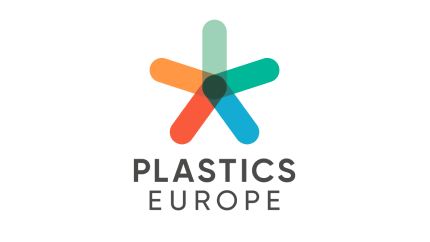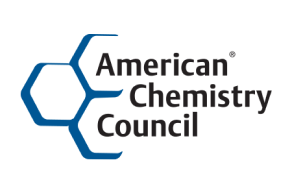Research Advancing Microplastics Science
Research funding has been committed by four plastic and chemical associations: the American Chemistry Council, Cefic, Japan Chemical Industry Association, and Plastics Europe. Research is taking place in five main categories: standardized material and method development, fate and transport of microplastics, ecotoxicology, human health impacts, and risk assessment.
Explore the research projects, leading scientists, published findings, and current funding opportunities.
Filter Results
Research Status
Microplastics Topics

Risk assessment for microplastics in terrestrial environments
This project aims to develop a holistic risk assessment framework for microplastics in the terrestrial environment based on a literature review and ecotoxicological data.

Comprehensive additive release and bioaccessibility model for risk assessment of micro- and nano- plastics in the environment
This project aims to model release, transformation (where relevant) and bioaccessibility of micro- and nano-plastic additives in the aquatic environment

Emission factors for micro- and nano-plastics in Europe
This project aims to develop a model to predict environmental emission factors for the entire life cycle of macro-, micro- and nanoplastics, across professional, consumer and industrial sectors.

Modeling human exposure to microplastic
This project aimed to develop a probabilistic model for human exposure to microplastics.

Assessing microplastic inhalation toxicity
This project aims to develop improved tools to test the inhalation toxicity of microplastics to humans.

Modeling fragmentation of micro- and nano-plastics in the environment
This project aims to develop a pragmatic, open-source mechanistic model of environmental factor effects on plastic fragmentation and degradation rates in various conditions and environmental compartments.

Assessing long-range transport of microplastics
This project aims to develop a robust, multimedia environmental fate modelling framework to assess long-range environmental transport of microplastics (and its additives).

Modelling microplastics in aquatic environments
This project aimed to develop a general-purpose open-source modeling platform to synthesize knowledge and understanding of the fate of microplastics in the environment.

Applying EU hazard assessment frameworks to microplastics
Microplastics have been detected in the environment but a full understanding of their hazards and risks requires additional research. This project looked at whether the existing EU hazard assessment framework could be applied to microplastics, examining the levels of microplastic that result in effects on aquatic organisms.

Modelling microplastics in aquatic environments
This project modeled how microplastics are transported and broken down in aquatic environments, building on existing environmental fate models for nanoparticles and other contaminants.

Microplastic risk assessment and model development: Framework development and risk assessment model, upgrade and maintenance
This is also part of the Plastics Europe Brigid research project to assess potential risks to human health due to microplastic exposure via ingestion. Working Package 4 focuses on risk assessment and model development. Elements of this working package are i) framework development; ii) risk assessment modeling; and iii) risk assessment upgrades and maintenance.

Microplastic risk assessment and model development: Hazard assessment: General, systemic, ex vivo and in vivo toxicities
This is also part of the Plastics Europe Brigid research project to assess potential risks to human health due to microplastic exposure via ingestion. Working Package 3 involves a hazard assessment at the levels of cells, tissues and organisms. The objective is to confirm and quantify whether the presence of microplastics in the body poses a hazard to human health.

Understanding the mechanisms of microplastic formation
This project aimed to clarify the kinetic mechanisms of microplastic formation, prepare reference microplastics and inform risk assessment

Modeling the vector effect of microplastics in the environment
This project is estimating the vector effect – by which microplastics can absorb organic or inorganic pollutants – and estimating its environmental impact.

Sources, emissions and environmental risk of microplastics
This project aims to assess the sources, emissions and environmental risk of microplastics to inform effective risk reduction strategies, with a focus on Tokyo Bay.

Ecotoxicological risk assessment for microplastics
Ecotoxicological risk assessment for microplastics

Assessing microplastic deposition in sediment cores from a contiguous water system (microDETECT)
The microDETECT project will provide spatial and temporal characterization of the transport and deposition of microplastics along India’s Palar River into the Indian ocean.

Using software assisted literature review to identify critical micro- and nanoplastic (MNP) literature and areas for high-impact research
This project involves creating a process to quickly and efficiently identify high-value literature via a centralized and curated literature repository for micro- and nanoplastics research.

Characterization of indoor and outdoor exposures to airborne microplastic particles
This project aims to address data gaps in quantitative understanding of exposure to inhalable or respirable microplastics in indoor and outdoor air and settled dust.

Lower size limits of microplastics and challenges for detection in complex samples
Nanoplastics – particles in the lower nanometer size range – pose distinct challenges compared to larger microplastics. This project aims to improve understanding of the behavior and impacts of nanoplastics by developing and optimizing methods to separate, concentrate, measure and identify them. There is an emphasis on validation using standard nanospheres and mixtures.

Polymer Kit 2.0: Reference materials to help standardize microplastics research
This project is a follow-up to the successful Polymer Kit 1.0, which created the first set of microplastic standards and in answer to the research community’s request for smaller reference materials.

Polymer Kit 1.0: Reference materials to help standardize microplastics research
This project is creating an affordable set of environmentally relevant polymers that can be distributed to researchers to help standardize microplastics research. Uses for the polymers include creation of in-house reference libraries, calibration of instruments, and experiments.

Method development for the extraction of microplastics from sediment
This project aims to create an affordable and efficient method to separate microplastics from marine sediments in preparation for physical and/or chemical analyses.

Reliably generating microplastic particles using novel methods
This project aims to generate and characterize microplastic particles from high-density polyethylene (HDPE) pellets using novel mechanical, chemical, and biological methods.

Development of silicon nanomembrane analysis pipelines (SNAPs) to characterize microplastics
This project aims to develop well-chracterized commercial reference microplastics along with streamlined analytical workflows known as silicon nanomembrane analysis pipelines (SNAPs). SNAPS enable reference microplastics to be characterized, and allow isolation, detection, and analysis of environmental microplastics.

Microplastics systematic review for mammalian developmental and reproductive toxicity endpoints
In this effort, a diverse group of subject matter experts (SMEs) with expertise in systematic review, microplastics, and developmental and reproductive toxicity (DART), are evaluating the potential DART effects associated with microplastics.

Microplastic risk assessment and model development: Exposure assessment: In silico model, transfer across barriers, in vivo tracking, human stool study
This is also part of the Plastics Europe Brigid research project to assess potential risks to human
health due to microplastic exposure via ingestion. Working Package 2 focuses on exposure
assessment, including: i) development of an exposure model; ii) investigation of transfer of
microplastics across barriers, iii) an in vivo tracking study, and iv) a human stool study.

Microplastic risk assessment and model development: Production and analytical models: Milling, labeling, characterization and baseline testing
This is part of the Plastics Europe Brigid research project to assess potential risks to human health from microplastic exposure via ingestion. In the project’s Working Package 1 (WP1), which focuses on microplastic production and analytical methods, there are three main activities: i) sample microplastics will be prepared by milling; ii) these microplastics will labeled, and iii) they will be tested for baseline toxicity.
